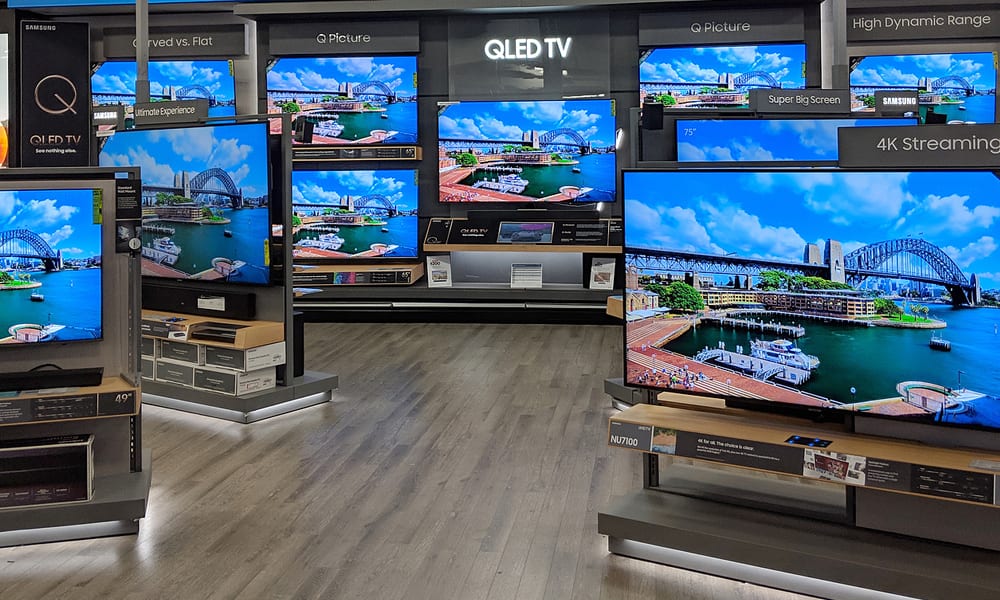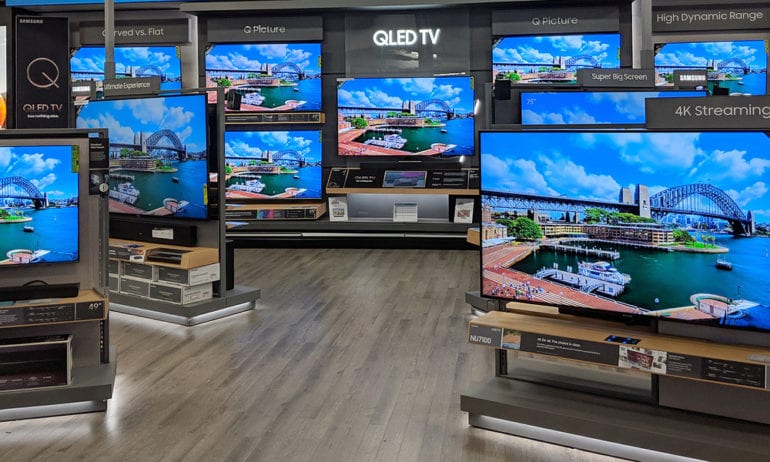What Do I Need to Know before Buying a Smart TV: Insider Tips

Before buying a Smart TV, consider screen size, resolution, operating system, and connectivity options. Research brand reliability and customer reviews.
Buying a Smart TV involves understanding several key factors to make the best choice. Screen size and resolution significantly impact viewing experience, so choose based on your room size and personal preference. The operating system determines the ease of navigation and app availability.
Reliable brands often provide better customer support and longer-lasting products. Connectivity options, including HDMI, USB ports, and Wi-Fi, enhance functionality. Reading customer reviews can offer insights into real-world performance and potential issues. A well-informed decision ensures you enjoy a seamless and engaging entertainment experience with your new Smart TV.
Evolving Landscape Of Smart Tvs
The world of smart TVs is constantly changing. New features and technologies are introduced every year. Understanding these changes can help you make a better choice. Let’s explore the evolving landscape of smart TVs.
Technological Advancements
Smart TVs are more advanced than ever. They come with 4K and 8K resolution, providing crystal-clear images. The colors are more vibrant, and the details are more defined. These TVs also support HDR (High Dynamic Range), which enhances the contrast and brightness.
Another significant advancement is the integration of AI (Artificial Intelligence). AI helps in improving picture quality and sound. It also enables voice control, making it easier to navigate through apps and settings.
| Feature | Benefit |
|---|---|
| 4K and 8K Resolution | Sharper and clearer images |
| HDR | Better contrast and brightness |
| AI Integration | Enhanced user experience |
The Shift To Smart Entertainment
Smart TVs are not just about watching regular TV channels. They offer a whole new way of entertainment. These TVs come with built-in streaming apps like Netflix, Hulu, and Disney+. You can access a vast library of movies and shows without needing extra devices.
Gaming on smart TVs is also becoming popular. Many smart TVs now support cloud gaming. This means you can play high-quality games without a console. Services like Google Stadia and Xbox Cloud Gaming are making this possible.
- Built-in streaming apps
- Access to a vast library of movies and shows
- Support for cloud gaming
- Play high-quality games without a console
Another exciting feature is the ability to control smart home devices. Many smart TVs are compatible with smart home ecosystems like Google Home and Amazon Alexa. You can control lights, thermostats, and even security cameras right from your TV.
- Control lights and thermostats
- Monitor security cameras
- Use voice commands
Key Features To Consider
Buying a Smart TV can be exciting, but you need to know what to look for. Here are some key features you should consider before making a purchase.
Screen Resolution And Size
The screen resolution determines how clear the picture will be. The most common resolutions are:
- HD (720p)
- Full HD (1080p)
- 4K Ultra HD (2160p)
- 8K Ultra HD (4320p)
If you want a crisp and clear image, go for at least 4K resolution. It offers four times the detail of Full HD.
Screen size also matters. Measure the space where you plan to place the TV. Here’s a quick guide:
| Room Size | Recommended Screen Size |
|---|---|
| Small Room (e.g., bedroom) | 32 to 43 inches |
| Medium Room (e.g., living room) | 44 to 55 inches |
| Large Room (e.g., home theater) | 56 inches and above |
Operating System Compatibility
The operating system is the software that runs your Smart TV. Common operating systems include:
- Android TV
- Roku TV
- WebOS
- Tizen
Choose an operating system that you find user-friendly. Look for one that supports the apps you use most often.
Connectivity Options
Connectivity options are crucial for a Smart TV. Ensure your TV has enough ports for your needs:
- HDMI Ports – At least three for multiple devices.
- USB Ports – For connecting storage devices.
- Wi-Fi and Ethernet – For internet connectivity.
- Bluetoot – For wireless accessories.
Having various connectivity options ensures your Smart TV can easily connect to other devices.
Understanding The Specs
Before purchasing a smart TV, it’s essential to understand the specifications. These specs will affect your viewing experience. Knowing what each spec means will help you make an informed decision.
Processor Speed And Ram
The processor speed determines how fast your smart TV can process data. A faster processor means smoother performance and quicker navigation.
RAM is the memory your TV uses to run apps. More RAM allows for better multitasking. Aim for at least 2GB of RAM for a smooth experience.
| Spec | Recommendation |
|---|---|
| Processor Speed | 1.5 GHz or higher |
| RAM | 2GB or more |
Hdr And Picture Quality
HDR stands for High Dynamic Range. It makes colors look more vibrant and improves contrast. Look for TVs that support HDR10 or Dolby Vision for the best picture quality.
Resolution is also important. A 4K TV has four times more pixels than a 1080p TV. This means sharper and clearer images.
- HDR10 – Basic HDR standard.
- Dolby Vision – Advanced HDR standard.
- 4K Resolution – 3840 x 2160 pixels.
Audio Technologies
Audio quality is just as important as picture quality. Look for TVs with Dolby Atmos or DTS:X for immersive sound.
Some TVs come with built-in soundbars. These can improve audio quality without needing extra speakers.
- Dolby Atmos – Provides 3D sound experience.
- DTS:X – Another 3D sound technology.
- Built-in Soundbars – Enhanced audio without extra equipment.

Credit: www.makeuseof.com
Smart Tv Interfaces
Choosing the right Smart TV involves more than just screen size and resolution. The interface is a critical aspect. It determines how easily you can navigate and access your content. A user-friendly and customizable interface can enhance your viewing experience.
User-friendly Designs
Modern Smart TVs come with intuitive and user-friendly designs. These designs make navigation simple for everyone. Icons are large and easy to understand. Menus are organized logically.
Smart TVs often use voice control features. You can give commands without pressing buttons. This is especially helpful for kids and elderly users.
Some Smart TVs have universal search. This feature lets you search across all apps and channels at once. You don’t need to open each app separately to find your favorite show.
Customization And Control
Smart TVs offer various customization options. You can personalize the home screen with your favorite apps. This makes it easy to access what you love most.
Many Smart TVs allow you to create multiple user profiles. Each family member can have their own settings and preferences. This is useful for households with diverse viewing habits.
Parental controls are available on most Smart TVs. You can restrict access to certain content. This ensures that kids only watch age-appropriate shows.
Smart TVs also support mobile app control. You can use your smartphone as a remote control. This adds another layer of convenience.
Streaming And App Ecosystem
Before buying a smart TV, it’s crucial to understand its streaming and app ecosystem. This ecosystem determines what content you can access and how smoothly your TV operates. Knowing the available streaming services and how apps integrate and update is key to making an informed decision.
Available Streaming Services
Most smart TVs support popular streaming services like Netflix, Hulu, and Disney+. But not all TVs offer every service. Check if the smart TV supports your favorite streaming platforms.
| Streaming Service | Availability |
|---|---|
| Netflix | Available on most smart TVs |
| Hulu | Available on most smart TVs |
| Disney+ | Available on most smart TVs |
| Apple TV+ | Available on selected smart TVs |
Look for a TV that supports the streaming services you use the most. Some TVs also offer exclusive content or apps not available on other platforms. Ensure the TV’s app store has a wide range of options.
App Integration And Updates
App integration is another crucial factor. A smart TV should seamlessly integrate with other devices and services. For example, check if it works with voice assistants like Alexa or Google Assistant.
- Voice Control: Control your TV using voice commands.
- Smart Home Integration: Connect your TV to other smart home devices.
Regular updates are essential for a smooth experience. Ensure the TV you choose receives frequent software updates. These updates provide new features and fix bugs.
- Check the manufacturer’s update policy.
- Look for user reviews on update frequency.
Updates also ensure your TV stays compatible with new apps and services. A TV that doesn’t receive updates may become obsolete quickly.

Credit: www.hellotech.com
Connectivity And Peripheral Devices
Before buying a smart TV, understanding its connectivity options is crucial. Connectivity determines how well your TV will integrate with other devices. This section will guide you through essential connectivity features like Bluetooth, Wi-Fi, and device compatibility.
Bluetooth And Wi-fi Capabilities
Modern smart TVs come with both Bluetooth and Wi-Fi capabilities. These features are essential for a seamless user experience.
- Bluetooth: Bluetooth allows you to connect various devices wirelessly. These include headphones, speakers, and game controllers.
- Wi-Fi: Wi-Fi connectivity lets you stream content from the internet. You can easily access services like Netflix, Hulu, and YouTube.
Ensure your smart TV supports the latest Bluetooth and Wi-Fi standards. This will provide better speed and connectivity.
Compatibility With Other Devices
Device compatibility is another critical factor. Your smart TV should easily connect with other devices you own.
Gaming Consoles: If you own a gaming console, ensure your smart TV has HDMI ports. HDMI ports provide the best audio and video quality.
Sound Systems: Check if the TV has optical audio output for high-quality sound. This is especially important if you use a home theater system.
Smart Home Devices: Some smart TVs can integrate with smart home devices. Features like voice control and smart assistants can enhance your TV experience.
Below is a table summarizing essential compatibility features:
| Device Type | Required Ports/Features |
|---|---|
| Gaming Consoles | HDMI Ports |
| Sound Systems | Optical Audio Output |
| Smart Home Devices | Voice Control, Smart Assistants |
Understanding these connectivity options will help you make an informed decision. This ensures a seamless and enjoyable smart TV experience.
Budgeting For Your Smart Tv
Buying a smart TV can be exciting, but you must plan your budget first. Knowing your budget helps you choose the best smart TV for your needs. Let’s break down what you need to know.
Price Ranges And Value
Smart TVs come in various price ranges. Prices can start from as low as $150 and go up to $2,000 or more. Here’s a quick look at different price ranges:
| Price Range | Features |
|---|---|
| $150 – $300 | Basic smart features, smaller screens, lower resolution. |
| $300 – $700 | Better resolution, larger screens, more smart features. |
| $700 – $1,200 | High resolution, larger screens, advanced smart features. |
| $1,200+ | Top-of-the-line features, largest screens, best resolution. |
Choose a smart TV that fits your budget. Make sure it has the features you need. Paying more doesn’t always mean better value.
Long-term Costs And Savings
Think about the long-term costs of owning a smart TV. Some costs include:
- Subscription fees: Services like Netflix or Hulu may require monthly fees.
- Electricity usage: Larger TVs may use more electricity.
- Maintenance costs: Occasional repairs or upgrades may be needed.
There are also potential savings:
- Smart features: Stream directly, saving on cable or satellite bills.
- Energy-efficient models: Look for energy-efficient models to save on electricity.
Weigh the initial cost against long-term savings. This helps you make a smart choice.
Making The Purchase
Buying a smart TV is exciting but requires careful consideration. After researching features, it’s time to decide where to buy, check warranties, and understand return policies. This section helps you make a smart purchase.
Where To Buy
You have two main options: online and physical stores. Each has its benefits.
| Option | Benefits |
|---|---|
| Online Stores |
|
| Physical Stores |
|
Warranties And Return Policies
Understanding warranties and return policies is crucial before buying a smart TV. These protect your investment.
Warranties typically cover defects and malfunctions. Check the duration and what’s included. Some TVs come with a one-year warranty, while others offer up to three years.
Return Policies vary by retailer. Ensure you know the return window and conditions. Some stores allow returns within 30 days, while others offer 14 days. Look for restocking fees or return shipping costs.
Here are some tips:
- Read the fine print of the warranty and return policy.
- Keep all receipts and documentation.
- Consider extended warranties for added protection.
By choosing the right store and understanding policies, you can confidently buy your new smart TV.
Installation And Setup
Buying a smart TV is exciting. But knowing how to install and set it up is crucial. Proper installation ensures you get the best experience from your new device. This guide will walk you through the steps of installation and setup.
Diy Vs. Professional Installation
DIY installation can save money. You just need to follow the manual. Make sure to have the right tools:
- Screwdriver
- Mounting brackets
- Level
Professional installation is more convenient. Experts handle the setup. They ensure everything is perfect. This option is best if you are not confident with tools.
Initial Configuration And Settings
Once your TV is mounted, you need to configure the settings. Follow these steps:
- Connect to Wi-Fi: Go to settings and select your network.
- Update firmware: Check for updates to get the latest features.
- Set up your streaming accounts: Log into apps like Netflix and Hulu.
You can also adjust picture and sound settings to your preference:
- Choose the best picture mode: Standard, Cinema, or Vivid.
- Adjust sound settings for clear dialogue or enhanced bass.
These steps ensure your smart TV works perfectly from day one.

Credit: www.hellotech.com
Future-proofing Your Investment
Buying a smart TV is a significant investment. You want it to last for years. Future-proofing your smart TV ensures it remains useful and relevant. This means considering software updates, support, and knowing when to upgrade.
Software Updates And Support
Software updates keep your TV running smoothly. They add new features and fix bugs. Check if the TV brand offers regular updates. Some brands stop updates after a few years. This can make your TV outdated quickly.
Look for TVs with good support. This includes customer service and warranty. If something goes wrong, you need help fast. A good warranty can save you money.
When To Consider Upgrading
Sometimes, you need to upgrade your TV. Here are signs it’s time to upgrade:
- Your TV no longer gets updates.
- New apps don’t work on your TV.
- The picture or sound quality is poor.
- Your TV is slow or crashes often.
Don’t wait too long to upgrade. A new TV can offer better features and performance. This makes watching shows more enjoyable.
Frequently Asked Questions
What Is The Downside Of A Smart TV?
Smart TVs can pose privacy risks due to data collection. They may also become outdated quickly and have limited app compatibility.
Do You Need Internet If You Have A Smart TV?
Yes, you need internet for a smart TV to access online features like streaming apps, web browsing, and updates.
Do You Need An Hdmi Cable With A Smart Tv?
You need an HDMI cable to connect external devices to a smart TV. It ensures high-quality audio and video.
Is Buying A Smart Tv Worth It?
Yes, buying a smart TV is worth it. Smart TVs offer streaming apps, internet browsing, and voice control features. They enhance your viewing experience with high-quality displays and connectivity options. Enjoy seamless access to your favorite content.
What Are The Key Features Of A Smart TV?
Smart TVs offer internet connectivity, streaming apps, voice control, and integration with smart home devices.
Conclusion
Choosing the right smart TV involves careful consideration. Assess your needs, budget, and desired features. Keep screen size and resolution in mind. Research different brands and read customer reviews. A little preparation ensures you’ll enjoy your new smart TV for years to come.
Make an informed decision and enhance your viewing experience.
